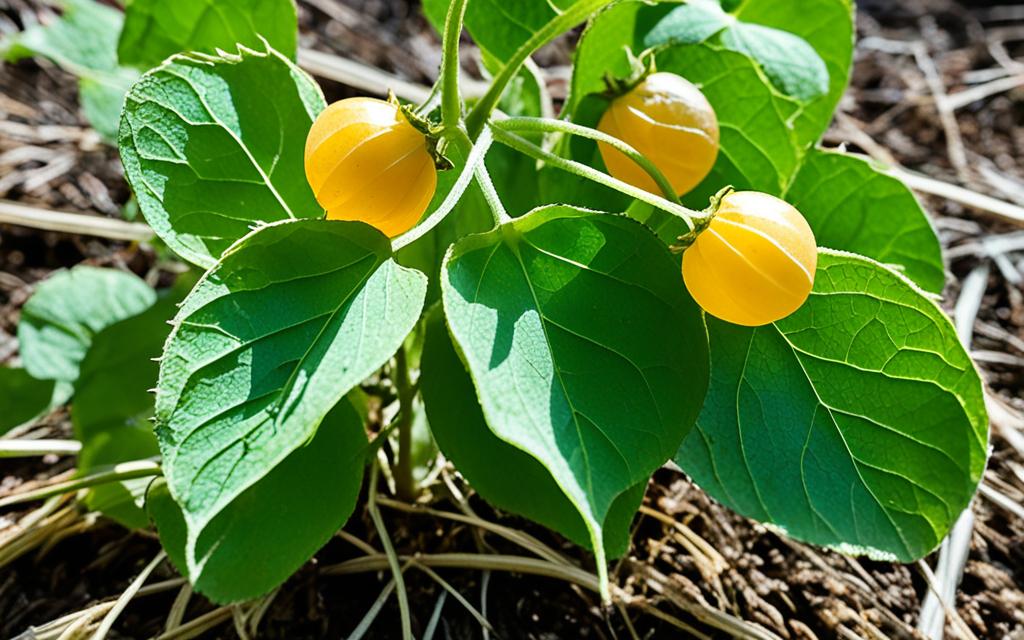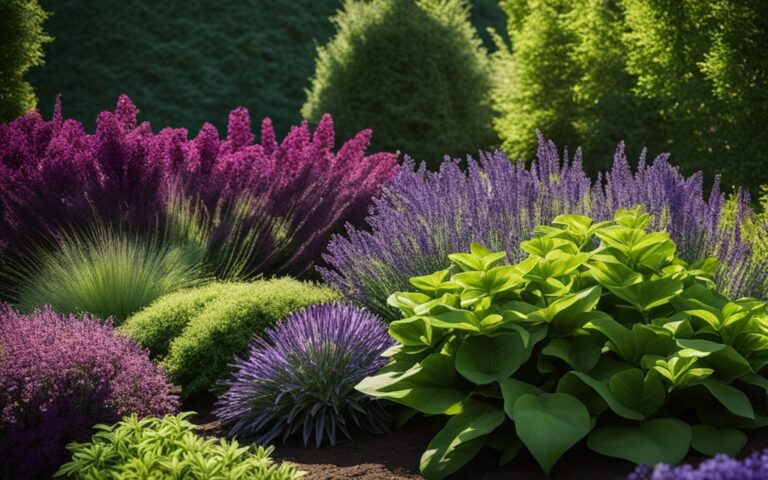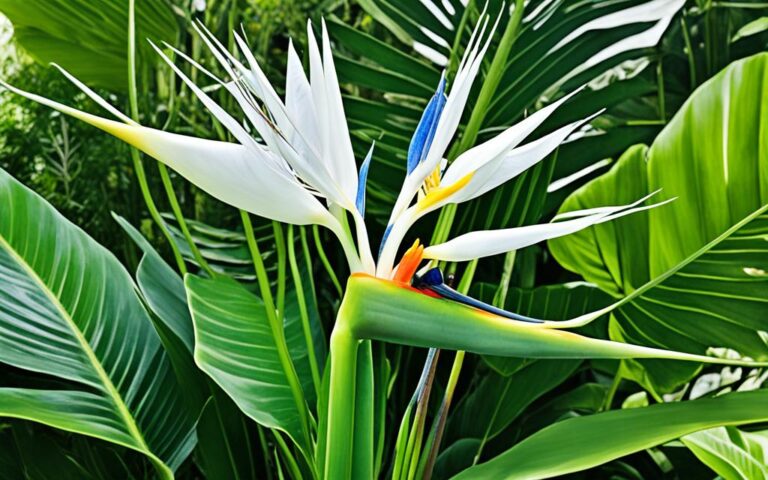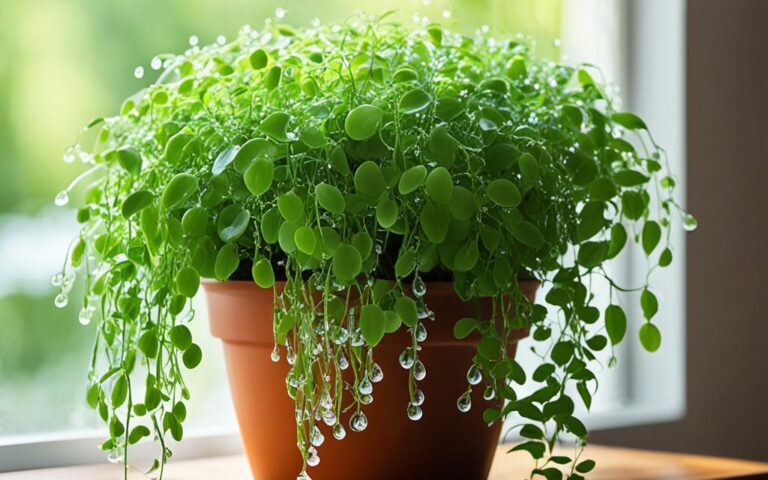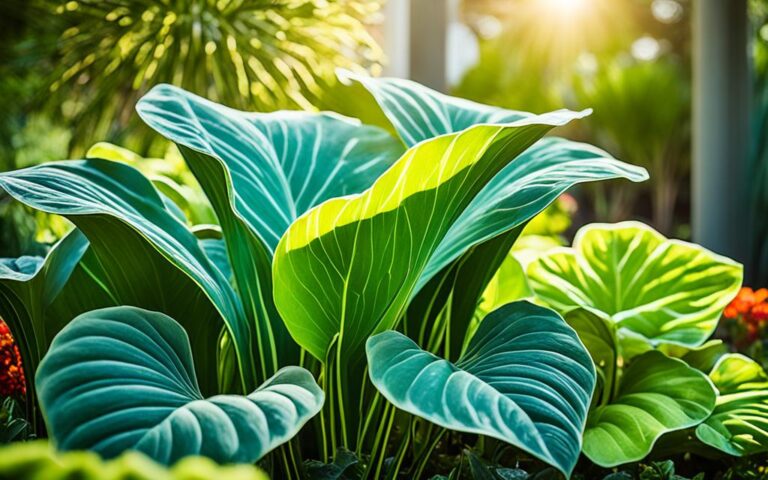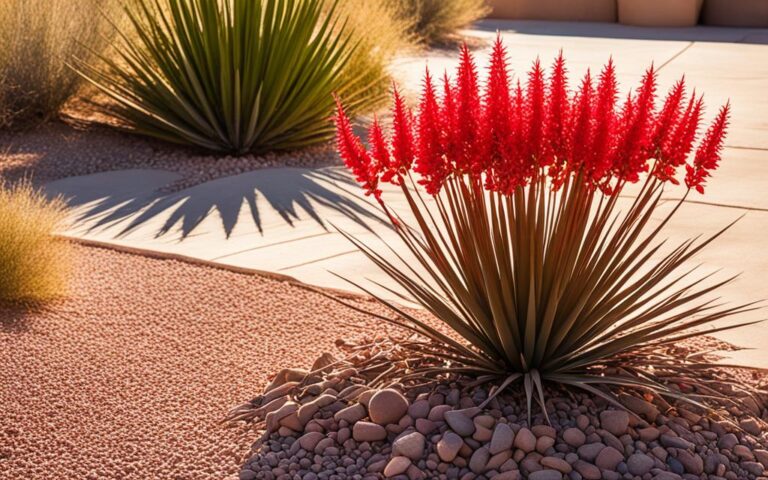Growing Ground Cherry Plants: Tips and Tricks
Did you know the heirloom Aunt Molly’s Ground Cherry can grow in 65-70 days in cooler places? These fruits, like tomatillos, are known as Physalis pruinosa or husk tomatoes. They have been grown in North America for a long time but are not well-known.
Ground cherry plants look like shrubs with bright green leaves and yellow flowers. These flowers lead to fruits wrapped in a paper-like husk.
The taste of ground cherries is sweet and a bit tart, similar to pineapple, mango, or peach. They are great for cooking and can be used in many dishes. This guide will teach you how to grow your own ground cherry plants for a big harvest.
Key Takeaways
- Ground cherries, also known as Physalis pruinosa, are plants in the nightshade family that produce unique, tomatillo-like fruits
- The heirloom Aunt Molly’s Ground Cherry variety can mature in just 65-70 days in cooler climates
- Ground cherries have a sweet-tart flavor profile reminiscent of pineapple, mango, or peach, making them versatile in the kitchen
- These plants require regular watering and fertilizing for optimal growth and production
- Harvesting ground cherries involves allowing them to drop to the ground when ripe, then picking them up for further ripening indoors
Introduction to Ground Cherry Plants
Ground cherries, known as Physalis pruinosa, are part of the nightshade family (Solanaceae). They are related to tomatoes. These fruits are often confused with husk tomatoes, tomatillos, cape gooseberries, or poha berries. But, they have unique traits that make them stand out.
Physalis pruinosa: The Sweet and Tangy Heirloom
The Physalis pruinosa variety has been grown by Pennsylvania Germans since the 1800s. These fruits are small, golden-yellow, and taste sweet-tart, like pineapple. Their papery husks and lantern-like shape make them a special treat in cooking.
Unique Features and Relatives
Ground cherries have yellow flowers, papery husks, and grow in a sprawling way. These traits set them apart from tomatillos and cape gooseberries. They belong to the Physalis genus but have a distinct taste and look. With over 75 species, there’s a lot to discover and enjoy.
“Ground cherries are a delightful and versatile fruit that can be used in a variety of sweet and savory dishes. Their unique flavor and texture make them a true culinary treasure.”
Growing Ground Cherry Plants from Seeds
Ground cherries are easy to grow from seeds and taste sweet and tangy. You can start them indoors or directly in the garden. Here are some tips for both methods.
Indoor Seed Starting Tips
Start ground cherry seeds indoors by planting them 1/4 inch deep in a seed-starting mix. Keep the soil moist and warm, around 75-85°F. This will help them germinate in 2 to 3 weeks.
When the seedlings come out, slowly get them used to the outdoors before moving them to the garden.
Direct Sowing Outdoors
You can also plant ground cherry seeds directly in the garden. Do this after the last frost has passed. Plant them 1/4 inch deep and keep the soil moist until they grow.
Ground cherries don’t need another plant to pollinate them. This makes them perfect for beginners growing them from seed.
Whether you start ground cherry seeds indoors or directly in the garden, they’re easy and rewarding to grow. They’re a great addition to any vegetable garden.
| Seed Starting Method | Germination Time | Transplant Spacing | Plant Height |
|---|---|---|---|
| Indoor Seed Starting | 2-3 weeks | 2 feet apart | 1.5-3 feet |
| Direct Sowing Outdoors | 5-8 days | 3 feet apart | 1.5-3 feet |
Choosing the Right Ground Cherry Variety
Gardeners have several ground cherry varieties to pick from, each with its own special traits. ‘Aunt Molly’s’, ‘Cossack Pineapple’, and ‘Goldie’ are some of the top choices.
Aunt Molly’s is a popular choice, known for its upright, bushy plants. It produces medium to large golden-yellow berries. These berries taste like tangerines and pineapples.
Cossack Pineapple is another favorite, known for its sweet, tangy flavor. It tastes like pineapple. This variety was brought to US gardeners from the National Germplasm collection.
The Goldie ground cherry is similar to Aunt Molly’s but grows lower and spreads more. Its large, orange berries taste like pineapple and strawberry. It’s a great choice for gardeners looking for variety.
| Variety | Characteristics | Flavor Profile |
|---|---|---|
| Aunt Molly’s | Upright, bushy habit | Tangerine, pineapple |
| Cossack Pineapple | Selected from National Germplasm | Sweet, tangy-sweet, pineapple |
| Goldie | Low-growing, spreading | Pineapple, strawberry |
Knowing the unique traits and tastes of each ground cherry variety helps gardeners pick the best one for their needs and likes.
Planting Ground Cherry Plants
Planting ground cherries is key to their success. They love well-drained soil rich in organic matter and a slightly acidic pH. Make sure they get full sun, but they can handle some afternoon shade in hot places.
Ideal Growing Conditions
These plants need at least 2-3 square feet (0.28 m²) to spread out. Plant them 2 feet apart to give them room to grow. They grow roots along their stems, so plant them deeply with just a few leaves showing.
Spacing and Support Requirements
To keep the plants from falling over, use a support like a tomato cage or stakes. This keeps them upright, improves air flow, and lets more sunlight in. This can make more fruit grow and taste better.
By thinking about the ground cherry planting needs, you can make a great spot for these tasty plants. With the right ground cherry growing conditions, ground cherry spacing, and ground cherry plant support, you’ll enjoy a big harvest of these unique fruits.
Soil Preparation for Ground Cherry Plants
Proper soil preparation is crucial for growing ground cherries. These fruits do well in soil that drains well and is rich in nutrients. The ideal soil pH is between 6.0 and 6.8.
To get your soil ready, start by adding compost or other organic stuff. This makes the soil better at draining water, more fertile, and gives your plants the nutrients they need. Using an organic potting mix made for fruits and veggies is also a great choice, especially for ground cherries in pots.
Adding a balanced, organic fertilizer to your ground cherry seedlings or plants can help them grow and produce more fruit. This extra nutrition ensures your plants get what they need for a great harvest.
“Ground cherries prefer a slightly acidic soil, so be sure to amend the soil accordingly if needed.”
By spending time to prepare the soil for your ground cherry plants, you’re giving them the best start. With the right conditions, these lovely fruits will grow well and give you a tasty harvest all season.
Light and Temperature Needs
Ground cherry plants need the right amount of light and temperature to grow well. They love full sun, needing at least 6 hours of direct sunlight every day. If they get less sun, they might not produce as much fruit.
These plants like temperatures between 55-65°F (13-18°C). They can take up to 85°F (29°C), but freezing temperatures can harm or kill them. Make sure to plant them outside after the last spring frost for the best harvest.
| Parameter | Optimal Range | Tolerance |
|---|---|---|
| Light Requirements | Full sun (6+ hours/day) | Partial shade, but reduced fruit production |
| Temperature | 55-65°F (13-18°C) | Up to 85°F (29°C), but frost can damage or kill plants |
If frost is coming before the ground cherries are ripe, you can use row covers or fabrics to protect them. This helps keep the growing season longer. By knowing what light and temperature these plants need, gardeners can have a great harvest.
Watering Ground Cherry Plants
Proper watering is key for growing ground cherry plants. They do well with about 1 inch of water each week, from rain or extra water. Keeping the soil moist is important, as dry soil can make the plants lose their flowers and not produce fruit.
To keep the soil around the plants moist, think about drip irrigation or soaker hoses. Adding organic mulch like wood chips or straw helps keep moisture in and weeds down. This way, you meet the ground cherry water needs without giving them too much water.
Remember, the soil should be moist but not soaked. Too much water can cause root rot and harm your plants. By finding the right balance, you create the best conditions for these tasty watering ground cherries.
| Watering Recommendation | Ideal Soil Moisture | Potential Issues |
|---|---|---|
| 1 inch of water per week | Consistently moist, but not waterlogged |
|
By following these watering ground cherries tips, you can make sure your plants get the right amount of water. This will help them grow well and give you lots of their sweet, tangy fruits.
Fertilizing Ground Cherry Plants
Ground cherries need a lot of food to grow well and produce lots of fruit. It’s key to give them the right nutrients. Use a balanced, organic fertilizer made for fruits and veggies when you plant the seedlings. You can also use continuous-release or water-soluble fertilizers during the growing season.
Using compost or well-rotted manure in the soil gives plants a steady supply of nutrients. Ground cherries don’t need a lot of fertilizer, so don’t overdo it. Too much can make them grow too much foliage and not enough fruit.
| Nutrient | Recommended Application | Benefits |
|---|---|---|
| Nitrogen (N) | Apply cautiously, as excess nitrogen can result in excessive foliage growth and delayed fruit production. | Promotes healthy leaf and stem development. |
| Phosphorus (P) | Apply according to soil test recommendations, typically at planting and during flowering/fruiting stages. | Supports root growth and fruit development. |
| Potassium (K) | Apply according to soil test recommendations, typically at planting and during flowering/fruiting stages. | Enhances overall plant vigor, disease resistance, and fruit quality. |
Knowing what ground cherry nutrition needs are helps gardeners make sure their plants do well. With the right nutrients, you can get a lot of these tasty fruits.
“Ground cherries are one of the most rewarding and easy-to-grow heirloom fruits. With the right fertilization and care, they can produce a bountiful crop year after year.”
Pruning and Training Ground Cherry Plants
Growing ground cherries can be more productive and look better with pruning and training. These plants spread out a lot, so support helps them and makes picking easier.
Supporting ground cherry plants works well with staking, caging, or trellising. This keeps the leaves and fruits off the ground. It also helps with air flow and makes picking easier. The plants can grow upright, saving garden space.
Pruning isn’t always needed, but it helps remove dead, damaged, or sick parts. Letting the plants spread can shade out weeds and boost fruit production.
When pruning ground cherries, use clean, sharp tools and make clean cuts. This avoids hurting the plant. Prune during the growing season, not when the plant is dormant.
Training ground cherry plants means gently guiding their stems and branches. You can tie them to a trellis or use stakes to keep them up high.
With the right support and care, your ground cherry plants will do great and give you lots of fruit. Just let them grow naturally but make some changes to help with air flow, weed control, and picking.
Ground Cherry Plant Pests and Diseases
Ground cherries are tough but can face pests and diseases. Whiteflies, flea beetles, hornworms, and cutworms might attack them, especially when stressed. Fungal problems can happen if air around the plants is poor.
To fight pests and diseases, it’s key to prevent them. Use row covers, pick pests by hand, and keep growing conditions right. If needed, use organic pesticides and fungicides.
Cutworms: A Growing Concern
Cutworms, which are active at night, are harming ground cherries more. They survive the winter better now, maybe because of climate change or better garden care. It’s hard to tell which cutworms are causing the damage.
For cutworms, farmers often use broad-spectrum pesticides. Non-chemical ways like collars or squishing can work too. Biocontrol methods, like Bt products for caterpillars, can also be used. Applying them often is key to success.
Mysterious Decline Disease
Ground cherries have been struggling with a mysterious disease. This disease makes plants wilt, drop fruit early, and collapse. Soilborne pathogens like Verticillium might be to blame, so good root drainage is important.
Tomato Spotted Wilt Virus (TSWV), spread by thrips, could also be causing the problem. Using Spinosad and neem oil can help control thrips. This virus might affect other plants like sweet peppers too.
Trying neem/karanja oil and spinosad has helped keep ground cherries healthy. But, the issue of early fruit drop and color change is still a worry. This makes some wonder about the value of spraying in the middle of the season.
There’s a push to test native Physalis plants. This could help find ways to fight the decline disease and keep ground cherries thriving.
Companion Planting with Ground Cherries
Ground cherries, also known as Physalis pruinosa, are great plants for many other vegetables, herbs, and flowers. By picking the right plants to grow together, gardeners can make a garden that works well for everyone. This includes the ground cherry plants.
One big plus of planting ground cherries with others is they get light shade and keep the soil moist. Taller plants like corn or pole beans help shade the ground cherries. This lets them grow well in the shade.
Herbs like basil, marigolds, and nasturtiums are great with ground cherries. They keep pests away, making the garden healthier and more balanced.
Ground cherries spread out and fit well between other plants. They work well with carrots, onions, potatoes, and fennel. This makes the garden look good and produce a lot of food.
Choosing the right ground cherry companion plants helps use space well. It also makes your plants healthier and more resilient. You’ll get a lot of these tasty fruits to enjoy.
“Ground cherries are a delightful and versatile addition to any garden, and with the right companion plants, they can truly thrive and flourish.”
Harvesting Ground Cherry Fruits
Ground cherries are a delightful fruit that need the right timing and method to enjoy fully. These small fruits are ready when their papery husks turn tan or brown. This means they have fallen to the ground, signaling it’s time to pick them.
Signs of Ripeness
The best way to know ground cherries are ripe is by their dried, papery husks. These husks change from bright green to a warm brown as the fruits ripen. When they’re fully dry and on the ground, it’s time to collect your harvest.
Harvesting Techniques
Harvesting ground cherries is a gentle task. Gently lift the branches and scoop up the fruits, removing the dried husks. Or, you can shake the plants to get the ripe cherries. But, make sure to skip any unripe fruits as they can be toxic.
| Harvesting Ground Cherries | Key Facts |
|---|---|
| Time to Maturity | 70-90 days from planting |
| Yield per Plant | Up to 300 fruits |
| Optimal Harvest Time | When fruits have fallen to the ground and husks have dried |
| Harvesting Method | Gently lift branches and scoop up fallen fruits, or give plants a gentle shake |
| Storage Life | Up to 3 months in a mesh bag, or 5-7 days refrigerated after husking |
By watching for ripeness signs and harvesting gently, you can get a lot of tasty ground cherries. With the right steps, these unique fruits can add joy to your cooking for many months.
Storing Ground Cherries
Storing ground cherries (Physalis pruinosa) is simple with the right methods. Fresh ground cherries can stay fresh for two weeks. Keep them in their papery husks in a cool, dry spot, either in a mesh bag or a container with holes.
To freeze ground cherries, take off the husks and wash them. Dry them well. Spread them out on a baking sheet and freeze until they’re solid. Then, move them to a container that seals well or a bag that can be closed again. They’ll keep in the freezer for months.
You can also dry ground cherries for a tasty snack or to add to recipes. Remove the husks, wash them, and arrange them on a dehydrator tray or a baking sheet. Dry them at a low heat until they’re as dry as you like, which is usually 24-36 hours.
For something different, make ground cherry jam, chutney, or salsa. Their unique taste goes well with many spices and ingredients. This way, you can enjoy them all year.
However you store your ground cherries, handle them carefully to keep them fresh and tasty. With a bit of planning, you can enjoy these fruits even after they’re out of season.
Using Ground Cherries in Recipes
Ground cherries have a sweet-tart taste that makes them perfect for many dishes. They can be enjoyed fresh or preserved. These fruits add a special touch to both sweet and savory meals. Try them in salads, salsas, pies, or baked goods for a burst of flavor.
Fresh Ground Cherry Recipes
Enjoy the fresh taste of ground cherries in yogurt parfaits, ground cherry salsa, and mixed green salads. Their tangy-sweet flavor goes well with creamy foods, herbs, and summer fruits.
Preserving Ground Cherries
To enjoy ground cherries all year, try freezing, drying, or canning them. You can make ground cherry jam, chutney, or even ground cherry wine. These preserved cherries are great in baked goods, sauces, and more.
Ground cherries add a unique flavor to any meal, from breakfast to dessert. Discover the many ways to use them in recipes and preserve them to enjoy their taste all year.
“Ground cherries share a flavor profile similar to a combination of pineapple and cherry tomatoes, making them a delightful addition to both sweet and savory dishes.”
Conclusion
Growing ground cherries (Physalis pruinosa) is rewarding and tasty for home gardens. These plants are easy to grow and produce lots of sweet fruits in papery husks. By planting, caring for, and harvesting them right, gardeners can get a lot of ground cherries. These fruits are great fresh, cooked, or preserved, offering a unique taste and health benefits.
Ground cherries stand out with their unique look, ability to grow in different places, and easy care. Research by Yamamoto et al., Witaicenis et al., Jin et al., Lima et al., Wu et al., and Yu et al. has shown their medicinal value and uses. This research helps us understand the benefits of these plants.
As seasons change, we move from small fruits to stone fruits, like peaches and apples. The author’s experiences in Detroit show how nature’s rhythms change. Using biodynamic methods and new techniques, like orgonite, can make ground cherry plants healthier and more productive. Ground cherries are a great addition to any garden, offering both taste and health benefits.
